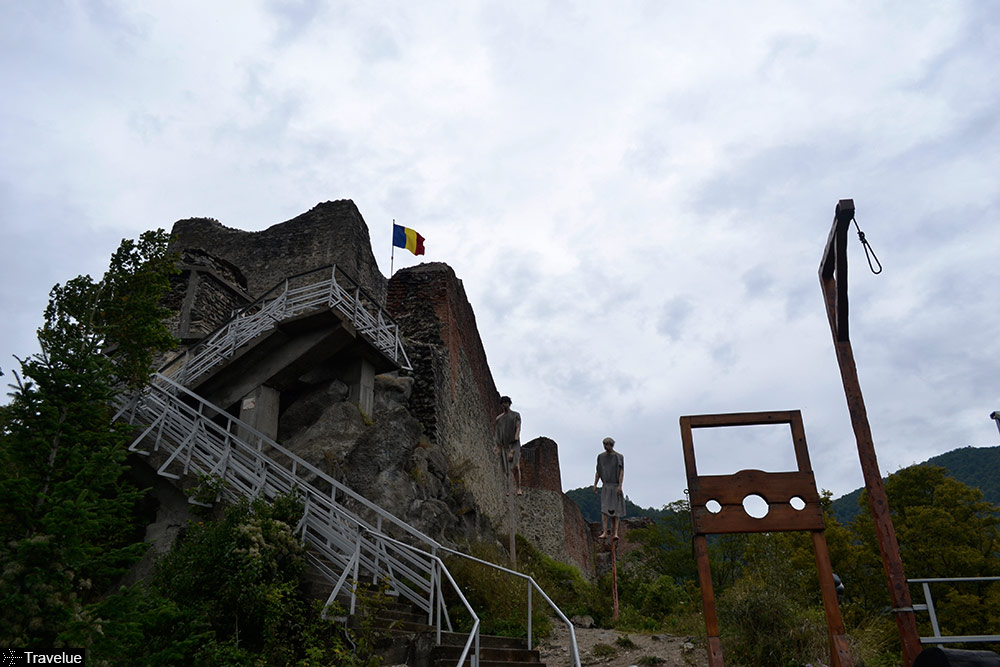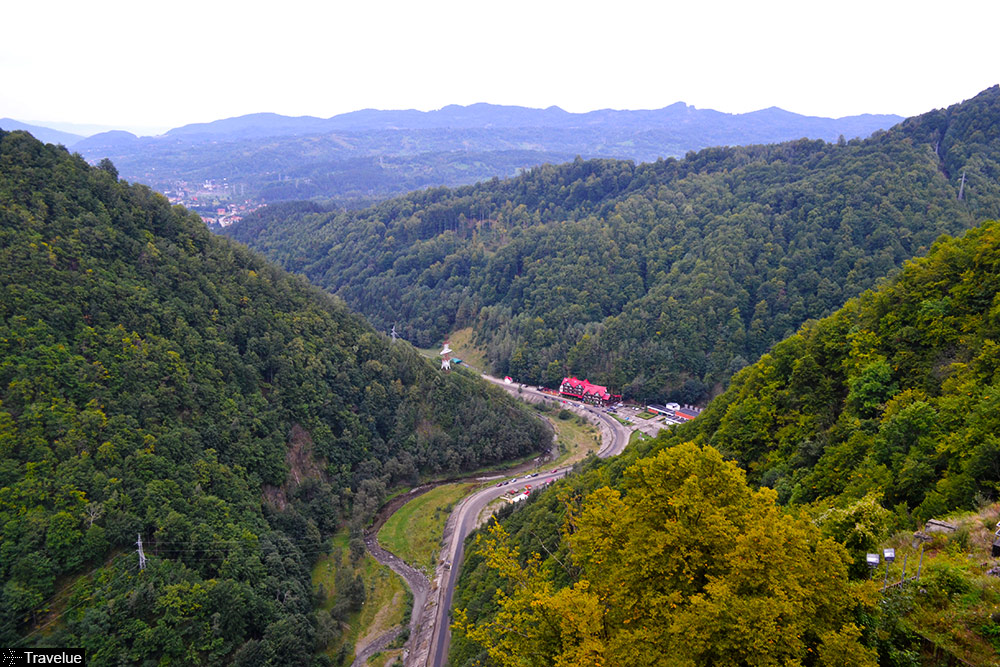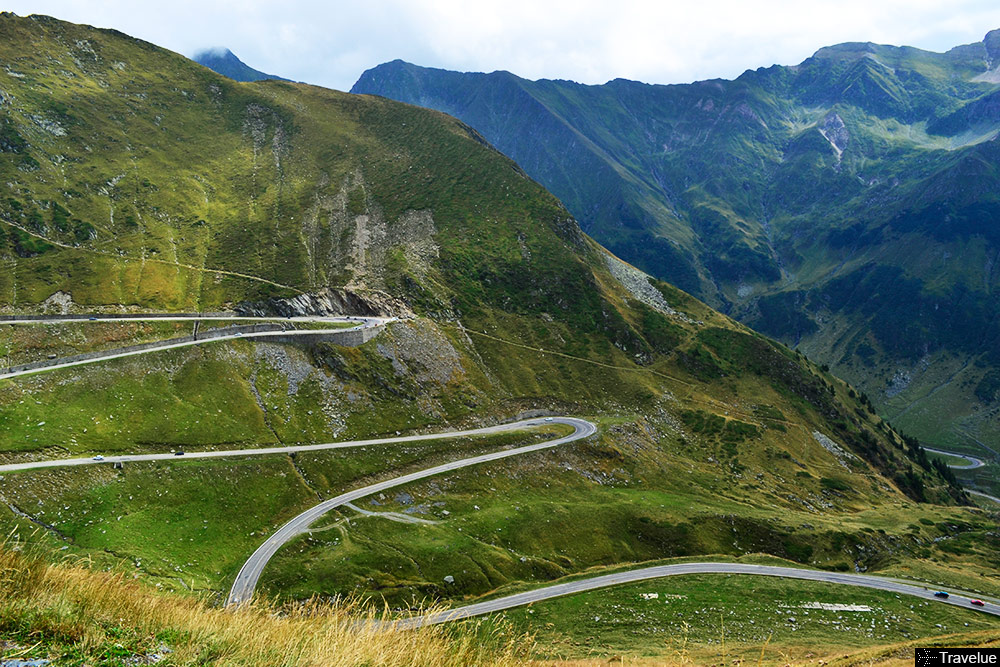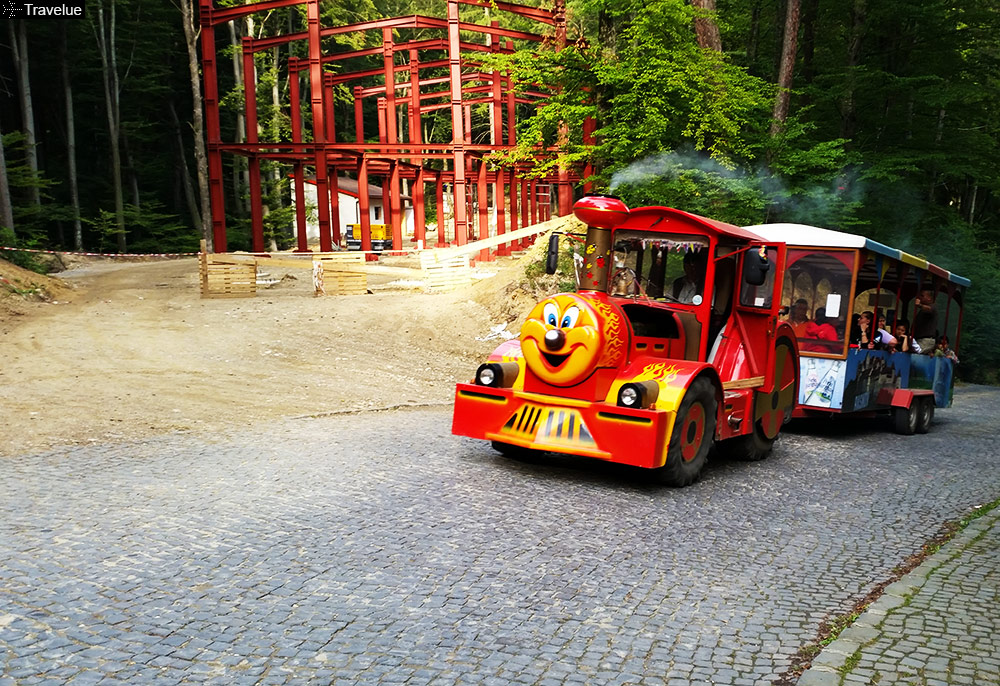I couldn’t help myself using some of the words from Jeremy Clarkson’s classic line about the Stig in the title and I think that’s a very good way to summarize Transfagarasan, the road crossing over Fagaras mountains between Pitesti and the DN1 crossroad near Sibiu (National Road No 1).
Just like some of the interesting things in Romania, Transfăgărășan was built quickly during the Ceausescu regime between 1970 and 1974, as a strategic safety measure against Soviet Union, allowing quick access for the military forces across Fagaras mountains, the ones dividing North Western from South Romania.
I can find two important reasons to go on a ride on Transfagarasan: one as a driver, especially if you have a sports car, and the other as a traveler who enjoys great nature views. Sometimes the first excludes the second, since riding shotgun with a spirited driver on a twisted road can make you car sick really fast, but that’s not the case with my little Korean KIA.
If you’re afraid of heights, Transfagarasan is the better choice, even if it’s not the highest paved road in Romania anymore, since Transalpina opened a few years ago. Why? Because is not as twisted as the latter and there are barriers preventing you from going off cliff. Yeap, Transalpina doesn’t have barriers and the unmarked still black pavement makes it hard to anticipate the next curve if it’s slightly dark outside. Add a pinch of crazy drivers and you can understand why these two roads are not for beginner drivers.
Planning your trip
One very important aspect to keep in mind is that during heavy snow and most of the winter season the road is closed at the top, so passing through the mountains is impossible. You can still drive on the open portion, but you would be missing the most impressive part.
Officially the road is open from June 1st to October 31st, but you can always check on this Facebook page or calling these official numbers: 021/9360, 021/264 3333 or 021/264 3334. Remember to add +40 or 0040 before them, if you’re calling from a number outside Romania and bring your Romanian dictionary with you, just in case the person on the other end of the line doesn’t speak English.
If the road is clear the only thing remaining is deciding on a route. In my case, since I live in Bucharest, I always go to Pitesti – Curtea de Arges – Vidraru Dam and then over Fagaras mountains, returning to Bucharest via Fagaras city – Brasov – Sinaia – Ploiesti or Avrig – near Sibiu – Ramnicu Valcea – Pitesti.
Any of these routes take less than one day, if you wake up early in the morning, so you don’t need to look for accommodation or pack sandwiches, since there are plenty of places to stop and eat along the way. I suggest you install TripAdvisor on your smartphone to get suggestions for local restaurants. Here you’ll find the map of my latest Transfagarasan trip, in case you need it.
Curtea de Arges Monastery
Location link – https://goo.gl/maps/8lSAR
Now let’s see what else there is to see along the way. If you choose the Pitesti route you’ll end up in Curtea de Arges in two hours, and the best place to stop is the Monastery domains, which are home to Curtea de Arges Cathedral, built using limestone sometime in the 16th century.
Even if you’re not into churches and all that, it’s a good idea to stop and admire what people were capable of building centuries ago without the help of modern tools, materials and techniques. Curtea de Arges Cathedral is key to one of the most important Romanian legends that suggests Mesterul Manole, the architect behind the Cathedral, sacrificed his wife into the walls, to finish the building in time.
The other builders, along with Manole, were left stranded on the rooftop once they finished their work, to keep them from building another cathedral. They tried to escape by building wooden wings, but fell to the ground one by one. It all sounds tragic, but this sacrifice motif is actually widespread in all South-East Europe cultures.
Poenari Castle (Cetatea Poenari)
Location link – https://goo.gl/maps/DdsU0
Moving along some 25 kilometers from Curtea de Arges we start to climb towards Vidraru Dam, but first it would be a pity not to stop at Poenari Castle, a fortress on top of Cetatuia mountain (official site). It was built sometime around the 15th century and it’s said to have helped Vlad the Impaler escape the turks at one time. You know, that guy I’ve told you about here who inspired Bram Stoker to create Dracula. Poenari fortress is also known as Vlad the Impaler’s castle or Negru Voda’s Castle, so in case your brochures are using these two names you’ll know they’re talking about the same thing.
I think it’s worth mentioning the fact you have to climb almost 1500 stair steps to get there, and there’s no other alternative. Yeah, it’s a great exercise, so prepare yourself in advance. When I got really tired I’ve seen the sign saying there are only 1000 more steps to go, but we got there in a timely manner, plus we knew the way down was going to be a piece of cake.



There’s an entrance fee inside Poenari Castle, less than two bucks, so it’s a bargain considering the views from the top, which make you wonder how motivated turks were to follow someone to these heights, ‘just to kill him’.
One thing you have to keep in mind if you’re traveling with kids, or have a weak stomach, is that on the citadel’s site there’s a reenactment scene of traditional death by impalement with two mannequins artistically painted with synthetic blood and dressed with clothes from medieval times and a few other medieval killing ‘tools’ including a guillotine.
Vidraru Dam (Barajul Vidraru)
Location link – https://goo.gl/maps/sCU19
If the Poenari Castle didn’t impress you much I think things will change once you reach Vidraru Dam (official site), the 5th largest dam in Europe when it was inaugurated back in 1965. It was the first arch shaped dam in Romania and it is still the largest one of its kind in our country.
Built to produce electricity and prevent floods, Vidraru Dam is 166 meters high and 307 meters wide, offering a great view of the valley below and the 155 meters deep lake it created behind it. Guarding the dam is the statue of Prometheus holding a lightning in his hands. A few years ago the highest bungee jump cord was mounted on top of Vidraru Dam, but it’s not in use at the time of this writing.



Make sure you continue driving on DN7C (you have to traverse the dam) because that’s the better paved road. DN7D goes on the other side of the lake and joins DN7C at one point, in case you follow it by mistake.
Transfăgărășan road
The actual part of the road that people like to drive on is just a few dozen kilometers, spanning on both sides of Fagaras Mountains. The descent towards Sibiu is the most picturesque one, since you can stop in a few places to see the sinuous road towards the valley ahead (as you can see on this live webcam), or you can just ‘refuel’ at a picnic, which is just what we did.




That’s not to say that the ascent is not interesting, as we’ve stopped in one occasion to climb up to a nearby waterfall that looked fantastic from the load below.



Plus the ascent part faces South, which means it’s sunny during the day.



The actual passing on the other side is done through a lengthy tunnel and conditions change dramatically once on the other side, where it’s windy, cloudy, foggy sometimes and a little bit crowded when you reach …
Lake Balea (Balea lac)
Location link – https://goo.gl/maps/mgjV9
This is probably the most crowded part of this magnificent road, a good place to stop and eat something from the roadside local food stands and buy souvenirs. You can stay overnight at Balea Cabin (official site), but I find the location a little pricey.
Crowded means noise, so you might not like staying there too much, but make sure you see the lake who gave its name to this place. It’s a huge contrast between its serenity and the nearby fairgrounds (live webcam). Hint: spend the extra dollar and park your car in the paid parking space, not on the roadside, as too many people do once they get there.
Rasnov Citadel (Cetatea Rasnov)
Location link – https://goo.gl/maps/ZlkPc
Once you start the descent from Balea Lake you understand what Top Gear was talking about. The bends are magnificent for experienced drivers, but soon the road starts to widen and straighten, the landscape changes subtly until it becomes flat and soon enough you are faced with a decision: Sibiu or Brasov. Both are great place to visit, and I’m planning to write articles about them in the near future, so make sure to bookmark our site.
This time we took the road towards Brasov, but steered to the right near the city to visit Rasnov fortress, also known as Rasnov peasant fortress (official site). It’s one of the best preserved fortifications, dating back to 14th century, and was used by villagers to protect themselves from the invading armies coming through Bran pass.
The entrance fee is about three dollars and if you want to get on top of the hill using the local transport from Fortress Valley you have to pay less than one buck. Personally I would just walk, since it’s not a very steep incline, so you’ll get there in 10 minutes or so.
Inside Rasnov Citadel there’s a museum with weapons, tools and objects from medieval times. There’s also a famous well meant to assure a steady supply of drinking water during prolonged sieges. The legend says it was dug by two turks for over 17 years on the promise they will be freed once the work was done. Another legend mentions a treasure buried inside the fountain, but recent explorations proved it wrong, unfortunately.






To me the best thing about Cetatea Rasnov is the panoramic view of its surroundings from the top spot. Being on top of a hill has it advantages I guess…
And that pretty much wraps things up with our little one day trip on Transfagarasan, one of the most famous roads in Romania. I hope you enjoy the pictures enough so that your next trip to Romania will include this epic road to your itinerary. If you have any questions or thoughts just post them below in the comment area and don’t forget to share this post if you liked it.



